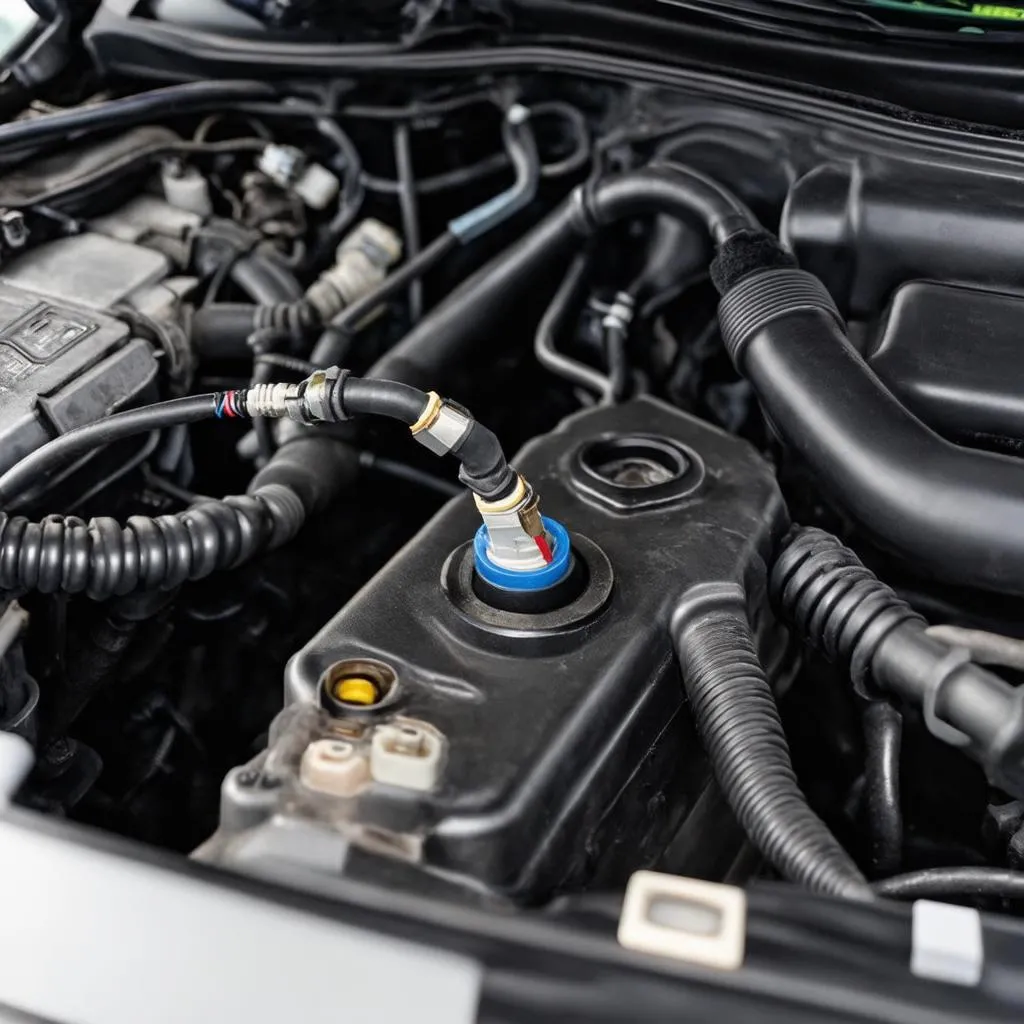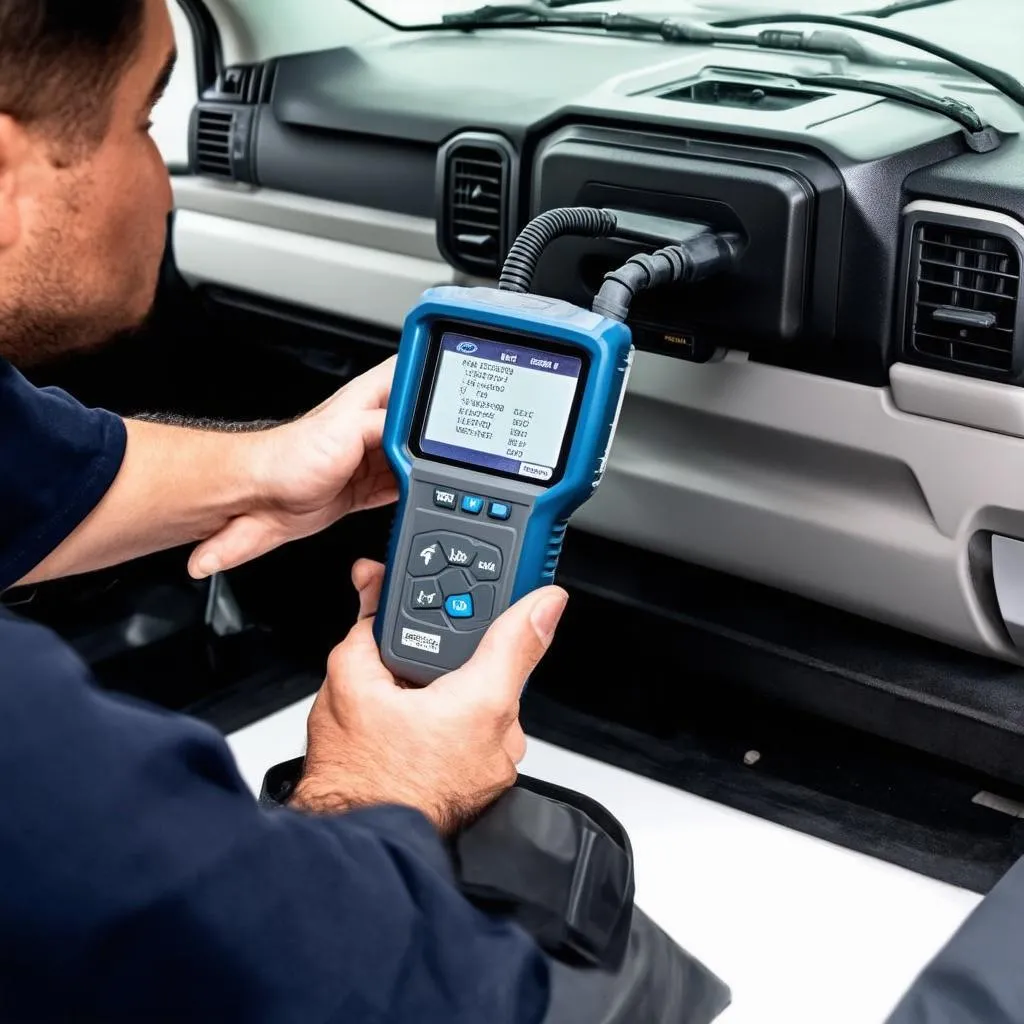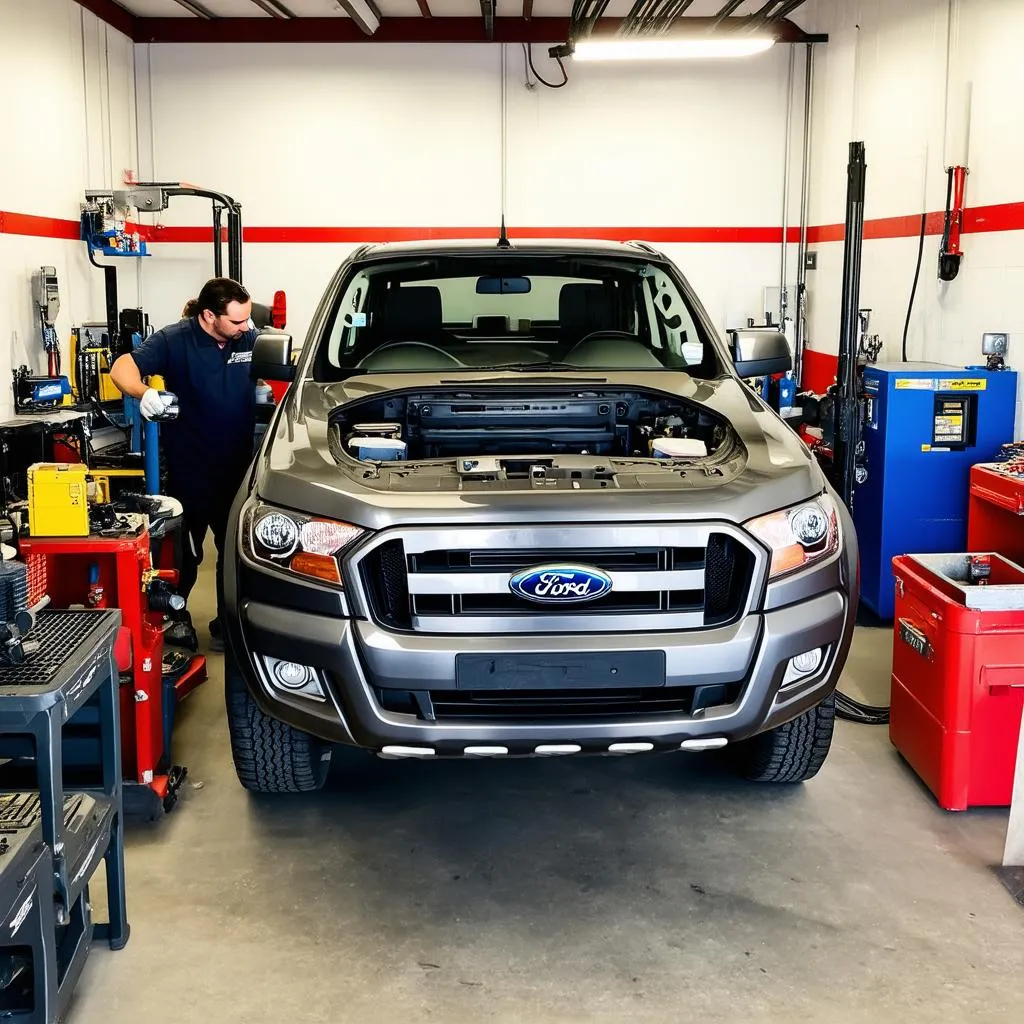“A stitch in time saves nine” – this old adage perfectly encapsulates the importance of proactive vehicle maintenance. Imagine cruising down a scenic highway, enjoying the wind in your hair, when suddenly, your Ford Ranger sputters and throws a check engine light. What’s going on? You pull over, and the dreaded OBD II code P0340 flashes on your scanner.
This is a situation that can happen to anyone, and understanding the intricacies of this code can help you diagnose the problem efficiently, prevent further complications, and get back on the road safely.
What Does Ford Ranger OBD II Code P0340 Mean?
The P0340 code, in the language of automotive diagnostics, translates to a “Camshaft Position Sensor ‘A’ Circuit Malfunction.” This means your vehicle’s engine control module (ECM) has detected a problem with the signal coming from the camshaft position sensor, which is responsible for tracking the position of your engine’s camshaft. This crucial sensor plays a vital role in synchronizing the timing of the engine’s valves with the movement of the pistons, ensuring optimal fuel combustion and engine performance.
Understanding the Importance of Camshaft Position Sensor
It’s important to understand how critical the camshaft position sensor is to your Ford Ranger’s engine performance. Think of your engine like a complex orchestra, where each component plays a crucial role in a synchronized dance. The camshaft position sensor is the conductor, ensuring that the pistons and valves work in perfect harmony. Any disruption in this harmony can lead to performance issues, reduced fuel efficiency, and even engine damage.
Common Causes of Ford Ranger OBD II Code P0340
1. Defective Camshaft Position Sensor
This is the most common culprit behind the P0340 code. Over time, the camshaft position sensor can wear out or become damaged, leading to inaccurate readings and triggering the code.
2. Wiring Issues
The sensor relies on a network of wires to communicate with the ECM. If these wires are damaged, corroded, or have loose connections, the signal can be disrupted, causing the P0340 code to appear.
3. Faulty ECM
While less common, a defective ECM can also contribute to the P0340 code. Imagine the ECM as the brain of your car. If it isn’t functioning correctly, it can misinterpret signals from the sensor, resulting in incorrect readings.
4. Electrical Interference
Electrical interference from other components in your vehicle can also interfere with the sensor’s signal, leading to the P0340 code.
Symptoms of Ford Ranger OBD II Code P0340
Besides the dreaded check engine light, you might notice other symptoms, including:
-
Rough Idle: The engine may feel unsteady or shaky, especially at idle. This is because the engine is trying to compensate for the inaccurate timing information from the sensor.
-
Engine Misfire: Your Ford Ranger might experience misfires, resulting in a rough running engine, jerking, and reduced power.
-
Reduced Engine Power: You might notice a decrease in overall engine performance, making acceleration sluggish and uphill climbs difficult.
-
Difficult Starting: The engine might struggle to start, or you might need multiple attempts to get it running.
-
Increased Fuel Consumption: Due to improper combustion, your fuel economy might decrease significantly.
How to Diagnose Ford Ranger OBD II Code P0340
Note: Always consult a professional mechanic for accurate diagnosis and repairs.
You can start by visually inspecting the camshaft position sensor and its wiring harness for any signs of damage, corrosion, or loose connections.
If you’re comfortable with basic automotive repairs, you can attempt a few tests:
-
Check for Continuity: Use a multimeter to check for continuity in the wiring between the sensor and the ECM. If there’s a break in the circuit, the sensor won’t be able to send signals correctly.
-
Inspect the Sensor: Clean the sensor with a contact cleaner to remove any dirt or debris that might be interfering with its operation.
-
Test the Sensor: Using a scan tool, check for proper voltage output from the sensor. If the readings are incorrect, it’s a strong indicator that the sensor is faulty.
Solutions for Ford Ranger OBD II Code P0340
Once you’ve diagnosed the problem, you can take the following steps to fix it:
1. Replace the Camshaft Position Sensor:
If your inspection or testing indicates a faulty sensor, it’s time to replace it.
Pro Tip: Choose a genuine OEM sensor for best compatibility and performance.
2. Repair or Replace Wiring:
If the wiring is damaged, you’ll need to repair or replace it.
Tip: Ensure you use proper wire gauge and crimp connectors for a safe and reliable connection.
3. Consult a Professional:
If you’re not comfortable with electrical repairs or suspect the ECM might be faulty, it’s best to consult a professional mechanic.
Preventative Measures
While no vehicle is immune to occasional issues, preventative maintenance can significantly reduce the chances of experiencing the P0340 code:
-
Regular Inspections: Schedule regular inspections to catch any potential problems before they become major issues.
-
Quality Parts: Use high-quality parts for all your vehicle repairs and replacements.
-
Clean Connections: Keep your electrical connectors clean and free from corrosion.
-
Fuel System Maintenance: Maintain a clean fuel system to prevent fuel contamination and minimize potential issues with your engine’s performance.
Common Questions about Ford Ranger OBD II Code P0340:
1. Can I drive my Ford Ranger with the P0340 code?
While you might be able to drive your vehicle with the P0340 code, it’s not recommended. The engine might run poorly, and driving with an unchecked issue can lead to more significant problems and potentially even damage your engine.
2. Will replacing the camshaft position sensor always fix the P0340 code?
In most cases, replacing the sensor solves the problem. However, if there’s an underlying issue, such as damaged wiring or a faulty ECM, the code might reappear.
3. Can I reset the P0340 code myself?
You can usually reset the check engine light by disconnecting the battery for a few minutes. However, this doesn’t fix the underlying issue, and the code will likely reappear.
4. What is the cost of fixing the P0340 code?
The cost can vary depending on the severity of the problem and the labor costs in your area. Replacing the camshaft position sensor might cost around $100 to $200, while repairs involving wiring or the ECM could be more expensive.
Additional Information:
You can find more information about OBD II codes and common automotive repair issues on TechCarUSA. We offer comprehensive resources to help you understand your vehicle better and keep it running smoothly.
[TechCarUSA Link: https://techcarusa.com/ford-dtc-code-to-obd/ ]
Get Help with Your Ford Ranger OBD II Code P0340:
If you need help diagnosing or repairing your Ford Ranger’s P0340 code, contact our team of experts at TechCarUSA. We’re available 24/7 to provide expert guidance and support.
WhatsApp: +84767531508
Don’t let a pesky code throw a wrench in your plans. We’re here to help you get back on the road and enjoy the open road!
 camshaft position sensor ford ranger
camshaft position sensor ford ranger
 obd2 scanner for ford ranger
obd2 scanner for ford ranger
 ford ranger repair shop
ford ranger repair shop